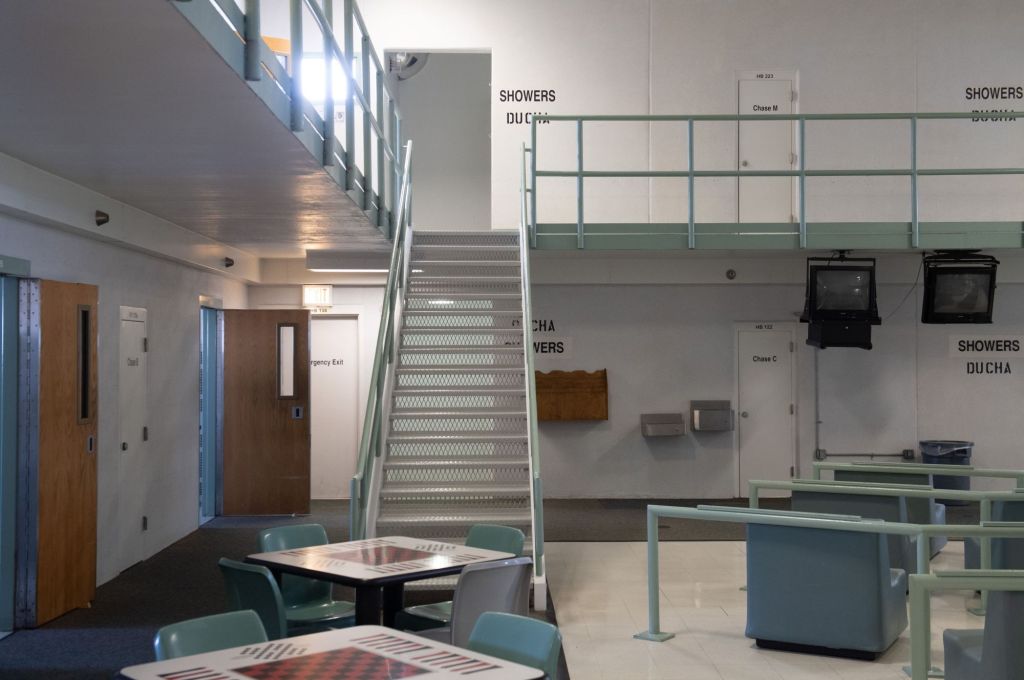The Economics of Immigration Detention: How Local Governments Stand to Profit
In the wake of the 2024 presidential election, Butler County Sheriff Richard Jones has taken steps to prepare for potential changes in immigration enforcement under former President Donald Trump. If Trump returns to the White House, Sheriff Jones plans to make Butler County Jail a key player in the “deportation business” by allocating up to 300 beds for Immigration and Customs Enforcement (ICE) detainees. This move could significantly boost the county’s revenue, as these beds represent about one-third of the jail’s capacity.
Despite evidence indicating that immigrants are less likely to commit crimes than U.S.-born citizens, Sheriff Jones has supported Trump’s immigration policies, stating, “I believe in American citizens first. People who have blood and sweat into this country have fought for it, them first. These other countries aren’t first. We are,” as he told WLWT.
The financial implications of detaining immigrants are significant for local governments. Butler County alone earned over $6.7 million in 2024 from renting jail space to agencies like the U.S. Marshals and the Bureau of Prisons. This figure is projected to rise to $8.5 million in 2025, as reported by the Journal-News.
Local support for these plans is strong, with county officials like Commissioner Don Dixon noting, “Obviously, the more prisoners we have, the more revenue it produces.”
As Trump’s proposed immigration policies could necessitate a vast infrastructure for detaining and deporting individuals, local jails could play a crucial role. These facilities might serve as detention centers, with local governments potentially entering into agreements with ICE to rent out space and subcontract operations to private companies. This setup allows ICE to bypass certain regulatory requirements, as detailed in a government report.
Meanwhile, the Biden administration has already extended private detention contracts, laying groundwork for future deportations. However, Trump’s plans face substantial financial, legal, and logistical hurdles, making full implementation challenging.
The financial benefits of immigrant detention extend beyond local governments. Private prison companies are poised to profit immensely, with some already experiencing surges in stock prices. This economic dynamic raises ethical concerns about the incentives driving expanded detention facilities.
Historically, local jails have played an integral role in immigration detention. According to Brianna Nofil’s book, “The Migrant’s Jail,” these practices date back to the early 20th century. By the late 1900s, revenues from migrant incarceration were funding various municipal projects.
Despite the financial gains, the human cost remains high, with reports of poor conditions persisting in detention facilities. Recent concerns about inadequate medical care and staff misconduct at the Plymouth County Correctional Facility highlight ongoing issues, even as the facility’s revenue increases due to new contracts.
Efforts to limit local governments’ agreements with ICE have faced resistance due to financial dependencies. In Illinois, a law banning ICE detention led to legal challenges from counties that relied on the income generated from such contracts.
Advocacy organizations like Detention Watch Network, represented by Stacy Suh, argue that these financial incentives are detrimental, suggesting that detention centers often fail to provide the economic benefits localities anticipate.
This article was produced by The Marshall Project, a nonprofit news organization focusing on the U.S. criminal justice system.







Be First to Comment